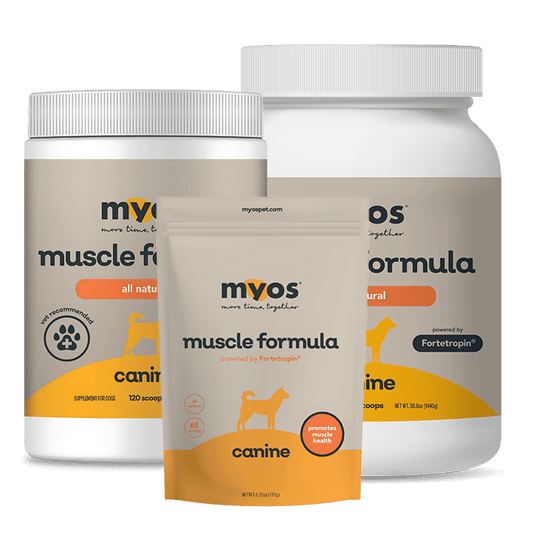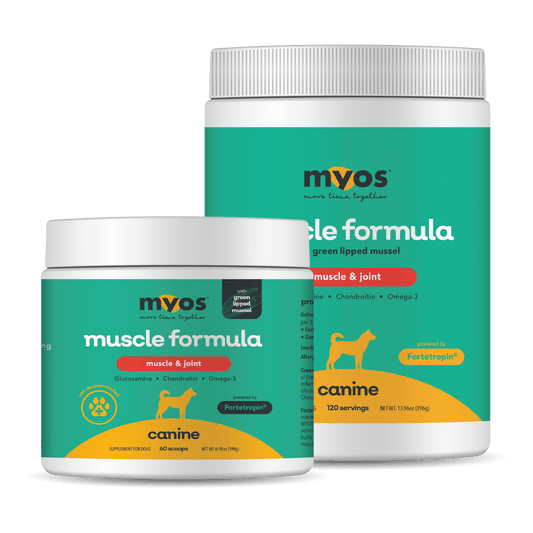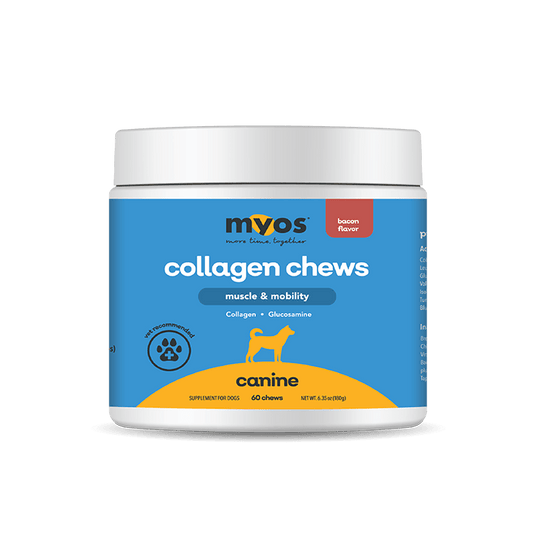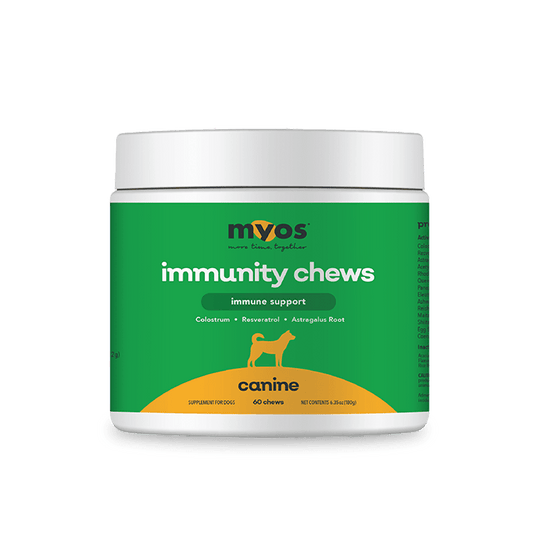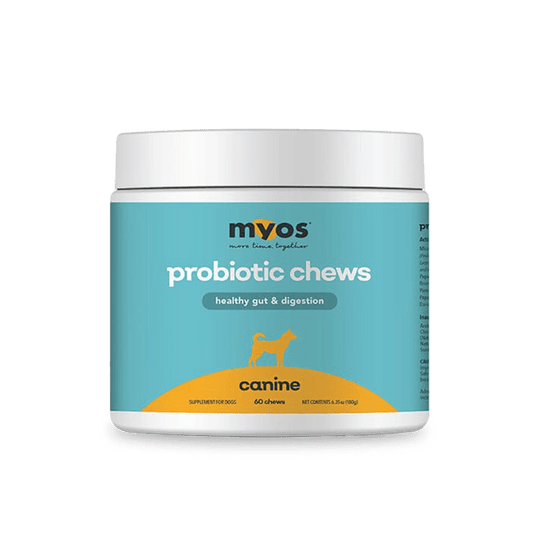Introduction
As dogs age, they like humans, experience changes in their eyesight. Progressive retinal atrophy (PRA) refers to a group of diseases that affect the retina which will lead to blindness over time. Although there is no effective treatment at this time for PRA, some promising results have been obtained in studies involving the antioxidants, lutein and zeaxanthin. Egg yolk is a rich natural source of lutein and zeaxanthin. In a human study involving older adults, consuming one egg per day over a five week period led to an increase in 26% (P < 0.001) and 38% (P < 0.001) in serum lutein and zeaxanthin concentrations without impacting total cholesterol, LDL, HDL and triglycerides [1]. In this blog post, a veterinary study published by researchers at the University of Missouri and Nestle Purina involving lutein and zeaxanthin supplementation will be discussed in detail. Fortetropin, a nutrition product made from 100% fertilized chicken egg yolk is a rich, natural source of lutein and zeaxanthin that helps to guard the eyesight of man and man’s best friend.
What is Fortetropin?
Fortetropin is a nutrition product that is produced from pure, 100% fertilized chicken egg yolk. Egg yolk powder products typically utilized heating during the pasteurization and drying steps. When egg yolk undergoes heating, many irreversible biochemical changes typically take place. For example, it is common for proteins to become denatured. Further, lipids become oxidized in addition to the methionine residues on proteins. Fortetropin is manufactured from fertilized, chicken egg yolk using a patented [2-4] low temperature manufacturing process that preserves the biological integrity of the proteins, peptides and lipids found within egg yolk. An alternative to consuming Fortetropin or heat- egg yolk subjected to heat pasteurization would be to consume egg yolk raw. However, it is very dangerous for small animals to consume raw egg yolk due to the high possibility of contamination from pathogens such as Salmonella and Listeria monocytogenes.
Lutein and Zeaxanthin: The AREDS and AREDS2 Studies
The National Eye Institute (NEI) sponsored clinical studies to evaluate two nutritional formulations comprised of antioxidants, the age-related eye diseases study (AREDS) [5] and the age-related eye diseases study 2 (AREDS2) [6].
Table 1: Nutritional Profile of the AREDS and AREDS Formula
Table reproduced from [7].
|
Nutrient |
AREDS Formula* |
AREDS2 Formula |
|
Vitamin C |
500 mg |
500 mg |
|
Vitamin E |
400 IU |
400 IU |
|
Beta-carotene |
15 mg |
- |
|
Copper (cupric oxide)** |
2 mg |
2 mg |
|
Lutein |
- |
10 mg |
|
Zeaxanthin |
- |
2 mg |
|
Zinc |
80 mg |
80 mg |
*Not recommended for current or former smokers
**Added to avoid zinc-related copper deficiency
mg = milligrams
IU = international units
In the AREDS study, researchers reported that participants that consumed the AREDS formula had a 25% risk reduction for developing advanced AMD over a five-year period. Because former smokers that consumed AREDS (which contained beta-carotene) had an elevated risk of developing lung cancer, NEI/NIH revised their guidelines after conducting the AREDS2 study which evaluated the AREDS2 formulation. The AREDS2 formulation does not contain the antioxidant, beta-carotene but rather contains lutein and zeaxanthin in its place. Both the AREDS and AREDS2 formulations were found to be very comparable in terms of their effectiveness at reducing the risk of developing advanced AMD. It was the AREDS2 study that inspired a great deal of interest among ophthalmologists in lutein and zeaxanthin supplementation to delay the onset of PRA. The AREDS2 study also provided the scientific rationale for veterinary ophthalmologists to evaluate lutein and zeaxanthin supplementation in dogs to address age-related eye diseases [8].
Lutein and Zeaxanthin in Veterinary Ophthalmology: Nestle Purina/University of Missouri Study
Researchers at Nestle Purina and the University of Missouri were interested in evaluating whether nutritional supplementation with antioxidants including lutein and zeaxanthin could improve visual function in 12 healthy male and female Beagles (6-8 years of age) based on evaluating changes in retinal response and refractive error over a 6-month period. Specifically, they evaluated a formulation that provided the following quantities of anti-oxidants: lutein 20 mg, zeaxanthin 5 mg, β-carotene 20 mg, astaxanthin 5 mg, vitamin C 180 mg, and vitamin E 336 mg.
To evaluate retinal function, the researchers relied upon measurements from electroretinography (ERG). ERG is based on stimulating the retina with an ERG waveform that is comprised of a-waves and b-waves (Figure 1). The a-waves and b-waves have two important properties: 1) amplitude and 2) implicit time (Figure 2).
The a-waves act primarily on the rods and cones while the b-waves act on Müller cells and ON bipolar cells (Figure 1). In many diseases of the retina, there is a decrease in the amplitude of the a-waves and b-waves and an increase in the implicit times (Figure 2). ERG measurements are typically made by ophthalmologists under different conditions such as: 1) Ssd, ERG response from scotopic standard-intensity light stimulation, 2) Sh, response from scotopic high-intensity light stimulation, 3) Pc, photopic cone response, and 4) Pfl, photopic flicker (30 Hz) response.
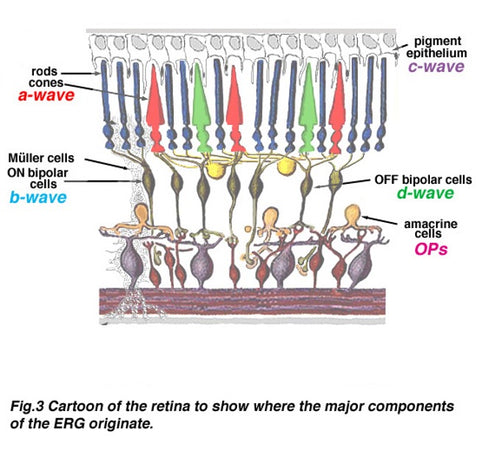
Figure 1: The impact of ERG waveform components on different cells comprising the retina. Image reproduced from [9].
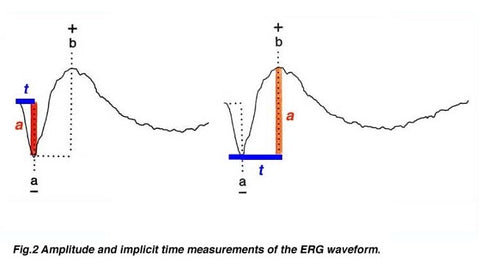
Figure 2: In diseases of the retina, there is generally a decrease in the amplitude (a) of both a-waves and b-waves and an increase in the implicit time (t) in both of these waves. Image reproduced from [9].
In Beagles that received anti-oxidant supplementation (red bars), it is clear from Figure 3 that the magnitude of change in refractive error was lower after 6 months when compared with Beagles that were part of the control group (blue bars). Dogs that received anti-oxidant supplementation experienced statistically significant increases in a-wave amplitude for Sh and Pc ERG measurements as reported in Table 2. No corresponding change was noted for a-wave amplitude measurements in dogs in the control group when considering measurements from Sh and Pc ERG measurements. A decrease in a-wave implicit time was observed in the Ssd experiment in Beagles that received anti-oxidant supplementation while no change was noted in this parameter among Beagles in the control group. When considering the impact on b-wave amplitude measurements in Ssd, Sh, Pc, and Pfl ERG experiments, a statistically significant increase was observed in these parameters in dogs that received treatment with anti-oxidant supplementation. No corresponding improvement in b-wave amplitude was noted in dogs that were in the control group.
Manufactured from 100% fertilized chicken egg yolk via a proprietary, low temperature process that circumvents the use of heat during the pasteurization and drying steps, Fortetropin has also been shown shown to promote the growth and development of muscle tissue in human [10] and veterinary [11] clinical studies.

Figure 3: The impact of anti-oxidant supplementation on refractive error changes in Beagles. Figure was reproduced from [8].

Table 2: The impact of anti-oxidant supplementation on changes in retinal function based on electroretinography (ERG) measurements. Table was reproduced from [8].
Summary
Egg yolk is a rich source of lutein and zeaxanthin, two antioxidants that guard against progressive retinal atrophy. In a veterinary clinical study involving male and female Beagles, it was reported that lutein and zeaxanthin supplementation improved retinal function based on ERG measurements and minimized changes in refractive error. Fortetropin is manufactured from 100% fertilized, chicken egg yolk using a patented low temperature manufacturing process that preserves the biological activity of biomolecules within egg yolk. A rich source of lutein and zeaxanthin, Fortetropin helps guard the vision of man and man’s best friend.
References
- Goodrow, Elizabeth F., et al. "Consumption of one egg per day increases serum lutein and zeaxanthin concentrations in older adults without altering serum lipid and lipoprotein cholesterol concentrations." The Journal of nutrition136.10 (2006): 2519-2524.
- Buxmann, W., Heinz, V., Toepfl, S. Process for producing a composition for increasing muscle mass. U.S. Patent # 11,051,524 B2. Issue date: July 6, 2021.
- Buxmann, W., Heinz, V., Toepfl, S. Process for producing a composition for increasing muscle mass. U.S. Patent # 10,165,785. Issue date: January 1, 2019.
- Buxmann, W., Heinz, V., Toepfl, S. Process for producing a composition containing active follistatin. U.S. Patent # 8,815,320. Issue date: August 26, 2014.
- Age-Related Eye Disease Study Research Group. "The age-related eye disease study (AREDS): design implications AREDS report no. 1." Controlled clinical trials20.6 (1999): 573.
- Chew, Emily Y., et al. "The Age-Related Eye Disease Study 2 (AREDS2): study design and baseline characteristics (AREDS2 report number 1)." Ophthalmology119.11 (2012): 2282-2289.
- https://www.nei.nih.gov/research/clinical-trials/age-related-eye-disease-studies-aredsareds2/aredsareds2-frequently-asked-questions
- Wang, Wei, et al. "Antioxidant supplementation increases retinal responses and decreases refractive error changes in dogs." Journal of nutritional science5 (2016).
- Creel, Donnell J. "The electroretinogram and electro-oculogram: clinical applications by Donnell J. Creel." Webvision: The Organization of the Retina and Visual System(2015). https://webvision.med.utah.edu/book/electrophysiology/the-electroretinogram-erg/
- Evans, William, et al. "Effects of Fortetropin on the Rate of Muscle Protein Synthesis in Older Men and Women: A Randomized, Double-Blinded, Placebo-Controlled Study." The Journals of Gerontology: Series A76.1 (2021): 108-114.
- White, Dana A., et al. "Fortetropin inhibits disuse muscle atrophy in dogs after tibial plateau leveling osteotomy." Plos one15.4 (2020): e0231306.

